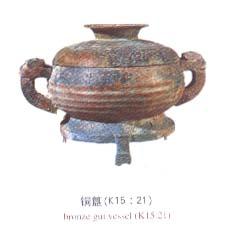2) Sacrificial custom


祭祀习俗
1.
Hence,totemic worship to the horses displays not only in the Mongolian production and lives,but also in the Mongolian Sacrificial customs.
蒙古牧人常常赋予马以神性,把马视为神灵和保护神,因此,对马的图腾崇拜不仅仅表现在蒙古族的生产、生活中,而且也反映在蒙古族的祭祀习俗中。
4) diet custom


饮食习俗
1.
The Cultural Adaptation and the Difficult Inheritance Condition of the Diet Custom of Luchuan Hakka;
陆川县客家饮食习俗的文化适应与传承困境
2.
Pieces of diet culture relying mainly on small food grains other than rice and wheat of Shanxi take the course of its own in the whole country, it forms the factor specially, various in style, the structure is unique;The special diet custom is a great landscape in the diet kingdom too.
山西以小杂粮为主的面食文化在全国独树一帜,其形成因素特殊,品种繁多,结构独特;特殊的饮食习俗也是饮食王国中的一大景观。
3.
The lengthy wordly affairs novel Qilu Lantern describes the weddings and funerals,etiquette and intercourse,and the diet custom in the feudal society of the beginning of Qing Dynasty.
长篇世情小说《歧路灯》生动细致地描绘了清初社会的婚丧嫁娶、礼仪往来、饮食习俗,记录了大量的社会掌故,涉及范围相当广泛,提供了一幅十八世纪中州地区的社会风俗画,为研究清代社会风尚和习俗提供了宝贵资料。
5) The Food Custom of Mulam


仫佬族饮食习俗
6) the ritual of praying to sky


祭天习俗
补充资料:河南新郑郑韩故城郑国祭祀遗址

河南新郑郑韩故城郑国祭祀遗址
时代:春秋
发掘地点:河南省豫西山地和豫东扇积平原的交接地带
发掘单位:河南省文物考古研究所
简介:
河南省新郑市郑韩故城是东周时期郑国和韩国的都城,郑国祭祀遗址位于郑韩故城东城西南面,总面积20000平方米,遗址清理出土春秋时期郑国青铜礼乐器坑17座,殉马坑44座、夯土墙基一道,商周灰坑791座,水井98眼,战国烘范窑3座,小型墓葬80座,瓮棺葬28座,两周及汉代灶坑9座,还有一批战国牛肋骨墨书文字从出土。发现了以348件郑国公室青铜礼乐器大都保存完好,精美富丽,件套完整,编钟、编镈138件,多经调音,为实用乐器。此次发掘大大丰富了对春秋时期礼乐制度、郑国铜器等方面的认识。郑韩故城郑国祭祀遗迹的发掘为研究战国文字和仓廪管理制度提供了难得的实物资料。对我国春秋时期的礼乐制度、古乐器学、考古音乐学、乐律史、音乐史和科学技术史等方面的研究,均具有非常重要的价值。
说明:补充资料仅用于学习参考,请勿用于其它任何用途。